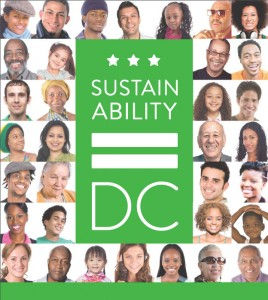Sustainable DC Plan Targets Emissions and Climate Resilience
- Steve Winkelman
- Feb 26, 2013
- 2 min read

DC Mayor Vincent Gray released the Sustainable DC Plan on Feb. 20 that sets forth ambitious goals and metrics pertaining to climate and the environment. The 20-year program includes reducing greenhouse gas emissions by 50 percent by 2032, and enhancing the resilience of DC infrastructure to climate change impacts. Notable climate resilience goals include (by 2032):
Climate Adaptation –The city will conduct change impact analyses of critical infrastructure and services to chart a course toward a resilient future.
The plan requires all new building and major infrastructure projects to undergo climate change impact analysis as part of the regulatory process (by 2032).
Evaluate the vulnerability of the District’s energy infrastructure to the anticipated impacts of climate change.
Prepare the District emergency services to respond to severe climate-related events such as extreme heat, storms and flooding.
Design transit systems for resilience to extreme weather events
Electricity – In addition to ambitious goals of increasing energy efficiency and the use of renewable energy, DC also aims to enhance energy resiliency and ensure business continuity. As power outages occur more frequently due to extreme weather events, utility companies are increasingly incorporating adaptation measures into risk management strategies in order to maintain the reliability of electricity supply.
The plan calls for a reduction in annual power outages to between 0 and 2 events of less than 100 minutes per year (by 2032).
Develop a plan for citywide rollout of smart meters and smart grid infrastructure.
Work with utility companies to improve the reliability of energy transmission and distribution.
Green Infrastructure – Practices such as green roofs, urban forestry, and water conservation increase community resilience by planning for and adapting to climate change impacts. Green infrastructure has been shown to have multiple benefits, including reducing temperatures and stormwater runoff, and can help prevent and temper the effects of floods, such as those in the summer of 2012 in Bloomingdale.
The plan aims to use 75 percent of the landscape to capture rainwater for filtration or re-use.
Install 2 million square feet of green roofs
Cover 40 percent of the District with a healthy tree canopy
Establish pervious surface minimums for targeted zoning districts
Increase wetland acreage along the Anacostia and Potomac Rivers by 50 percent
Transportation and Smart Growth – Sustainable transportation and land use can reduce greenhouse gas emissions, enhance economic prosperity and improve quality of life (Growing Wealthier).
The plan aims to increase use of public transit, biking, and walking to 75 percent of all commuter trips, and reduce commuter trips by car to 25 percent.
Provide parkland or natural space within a 10-minute walk of all residents
Develop a citywide, 100-mile bicycle network
Study the feasibility of a regional congestion fee
CCAP supports the Sustainable DC Plan and the city’s efforts to improve the quality of life for residents. CCAP’s own urban adaptation program, Weathering Climate Risks, aims to help cities and companies enhance physical, economic, and social resilience in the face of severe weather trends and climate change impacts.




Comments